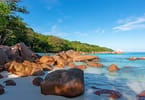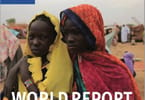A fierce rearguard action is being fought to prevent the Galapagos – the world’s most renowned wildlife site – being damaged by development. Hotels, discos, and new townships have sprung up on several of the islands, and the population has doubled in 10 years. Darwin’s pristine wilderness is now a permanent home to 30,000 people, plus 173,000 visitors each year.
Although 97 per cent of the islands form a national park in which development is banned, towns outside the park have mushroomed. They have become a Mecca for young Ecuadoreans arriving from the mainland on cheap air tickets. Their demand for discos and beaches could turn parts of the archipelago into the Ibiza of the eastern Pacific. The islands, 600 miles from the mainland, are battling several huge problems at once. There are the hordes of visitors, which have quadrupled since 1990 and more than doubled since 2005. There is environmental pollution and also the introduction of invasive flora and fauna such as goats, rats, dogs and cattle.
Research by the Charles Darwin Foundation, a research organisation based on Santa Cruz, the most populous of the islands, suggests that 60 per cent of 168 endemic plant species are threatened. Feral goats have been a major headache, introduced plant species (748) now outnumber those that are native (about 500). More than 500 non-native insects have been introduced, mainly inadvertently. One, a parasitic fly, is attacking the famed Darwin’s finches, according to the UK-based Galapagos Conservation Trust.
Some invasive species are brought in on tourist boats and cargo ships ferrying food and fuel to the burgeoning population. A recent report on the Galapagos by conservation groups claims these ships rarely treat water discharged into the sea. This month the science journal Global Change Biology revealed that, of 43 threatened Galapagos marine species, one in five may already be extinct.
Above all, the islands are struggling to cope with the press of people from the mainland who see their country’s Pacific possessions as a brave new boomland. Here, they can find the jobs that are hard to come by in Ecuador and which attract higher wages than at home. Construction workers, for instance, earn $1,200 (£750) a month on the Galapagos, but only $500 in Ecuador. Up to the early 1970s, inhabitants numbered around 4,000. Since then, the population has risen more than sevenfold, although Ecuador has recently “repatriated” 1,000 residents to the mainland.
Small villages have developed into buzzing towns. Nearly 20,000 locals dwell in Puerto Ayora on Santa Cruz. Here, visitors find many restaurants, shops, bars and nightclubs – most of them on Charles Darwin Avenue. Hotels and hostels are also plentiful.
The inhabited islands already groan under a struggling infrastructure which includes 29 schools and three airports. Commercial flights to the Galapagos increased by 193 per cent between 2001 and 2006. The number of vehicles in Santa Cruz alone has increased from 28 in 1980 to 1,276 in 2006. The Charles Darwin Foundation estimates that 9,000 birds have been killed on the highway each year between 2004 and 2006.
These pressures have not gone unnoticed. In 2007, Unesco, the United Nations body that regulates world heritage sites, put the islands on its endangered list, underscoring the critical situation. On Galapagos Day in September this year, Sir David Attenborough warned that they were at a tipping point: “Due to the consequences of human intervention, many species are now threatened with extinction.” He said that without prompt action this “natural treasure will be lost for ever.”
But, under Ecuador’s new government, the Galapagos have been fighting off ruination. In Quito, the Ecuadorean capital, President Rafael Correa is trying to do something about the threats to the islands. “The first thing I did when I came into office in January 2007 was to put a compete ban on people coming to settle in the Galapagos,” he told The Independent on Sunday recently.
Mr Correa wants to make a reality of the protection given to the archipelago and its amazing flora and fauna when it was declared a national park 50 years ago. He says he is proud of the fact that he has pushed through the first constitution in the world that puts the natural world in top position. Its first article proclaims: “Nature or Pachamama, where life is started, has the right to exist, last and regenerate its life cycles, its structures, functions and processes of evolution.” A vigorous programme has eradicated 64,000 feral goats, donkeys, and pigs from Isabela Island, according to the Galapagos Conservation Trust. Some threatened native species are beginning to recover.
As far as the 20 main islands are concerned, the Ecuadoreans try to keep pollution under strict control and cut down on the imported fuel that provides most power and mobility on the islands. “I’m very keen to promote the generation of electricity in the Galapagos through wind power,” says Marcela Aguinaga, Ecuador’s environment minister. “But it’s not plain sailing. You’ve got to try to prevent the birds flying into the vanes of the wind turbines. And that’s not an easy job.”
To some extent, tourism is regulated by the high cost of getting to the islands and subsisting there, combined with the $110 tax levied on foreign tourists. Unesco has asked Ecuador to clamp down on new accommodation in the islands’ towns. Hotel and boarding house owners are, however, opposing limits on visitor numbers.
Great care is being lavished on the giant tortoises whose domed shells reminded the Spaniards of the saddles (galapagos) worn by packhorses. In one of the planet’s best-observed acts outside Las Vegas, two female giant tortoises, unromantically named Female 106 and 107, resumed laying eggs last year, six and five respectively, overseen by the staff of the Giant Tortoise Reproductive and Nurture Centre on Santa Cruz. At stake was the survival of one particular species.
Female 106 had been the companion of Solitario Jorge (Lonely George) for 16 years. Four of her eggs were kept at 29.5C to encourage, if fertilised, the emergence of females: the other two were maintained at 28C in the hope that they would be males. Female 107 had had a shorter relationship with Solitario Jorge. None of the 11 proved to have been fertilised.
Solitario Jorge is thought to be the last surviving member of his line, Geochelone abingdoni. Being between 60 and 90 years old, and thus still in the prime of life, he clearly retains reproductive powers. Hope springs eternal that his genes will be passed on soon.
In other parts of Ecuador remedial work has come too late. Earlier military regimes allowed American oil companies to ruin stretches of the Amazonian jungle with their drilling. Now President Correa is pushing the idea of getting developed countries to compensate Ecuador for the loss of revenue – say €$350m a year – if it keeps its crude oil in the ground. Germany seems to favour such an environmental deal. But, as far as the rest of the world is concerned, it will be by Mr Correa’s curating of the Galapagos that he will be judged.
WHAT TO TAKE AWAY FROM THIS ARTICLE:
- “The first thing I did when I came into office in January 2007 was to put a compete ban on people coming to settle in the Galapagos,”.
- He says he is proud of the fact that he has pushed through the first constitution in the world that puts….
- Mr Correa wants to make a reality of the protection given to the archipelago and its amazing flora and fauna when it was declared a national park 50 years ago.






















